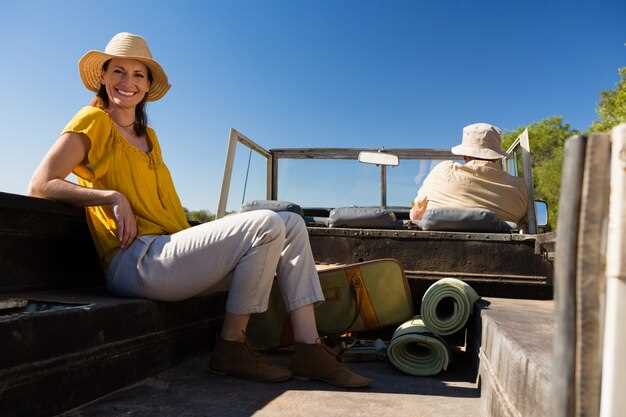
In today’s fast-paced world, achieving a harmonious balance between professional responsibilities and personal interests is increasingly challenging. For many, the thrill of weekend rides serves as a vital escape from the daily grind. However, the need to manage time effectively can often lead to a struggle between work commitments and the desire to hit the open road.
Establishing a routine that allows for both productivity and leisure is essential. Creating a structured work schedule can help individuals reserve specific times for their passions. This not only benefits mental health but also enhances overall work performance. Prioritizing weekend rides can transform them from mere escapes into rewarding experiences that rejuvenate the mind and body.
Furthermore, the importance of planning cannot be overstated. By integrating weekend rides into one’s calendar, individuals can ensure that they maximize their time off without neglecting work obligations. This proactive approach fosters a sense of fulfillment that transcends the boundaries of work and leisure, creating a lifestyle where both aspects coexist harmoniously.
Prioritizing Weekend Plans in a Busy Schedule

In our fast-paced world, finding time for weekend rides often requires careful planning and prioritization. Balancing a busy work schedule with personal interests is crucial for mental well-being and overall productivity. To ensure that weekend rides remain a priority, it’s essential to adopt effective strategies.
Set Clear Goals: Begin by defining what you want from your weekend rides. Whether it’s relaxation, adventure, or connecting with fellow enthusiasts, having clear objectives helps in making informed decisions about your schedule. This focus can motivate you to make necessary adjustments during the week to accommodate these activities.
Plan Ahead: Use a calendar or planning tool to block off time for your weekend rides. Treat these as important appointments that cannot be missed. This proactive approach minimizes the risk of last-minute work obligations encroaching on your personal time. Consider also preemptively checking weather conditions and road conditions to choose the best time for your rides.
Communicate with Colleagues: Share your weekend plans with your team to secure their support. Informing colleagues about your availability can encourage them to respect your time and possibly adjust work demands accordingly. Establish a culture where everyone understands the importance of work-life balance, and mutual respect for personal time keeps the team motivated.
Evaluate Your Commitments: Regularly assess your weekly commitments and eliminate or delegate tasks that are non-essential. Prioritizing your workload allows you to free up significant time for rides. Consider allocating specific periods during the week to focus on important projects, so you can afford to step away during the weekend.
Stay Flexible: Despite meticulous planning, unexpected work demands may arise. Build resilience in your schedule by keeping some flexibility for adjustments. If you must change or shorten your planned ride, consider alternative options like local excursions or quick outings that still allow you to enjoy time on your bike.
Reflect and Adjust: After each weekend ride, take time to reflect on the experience. Consider how the ride contributed to your relaxation and enjoyment. Adjust future plans based on these reflections, ensuring that you continue to prioritize experiences that enrich your life and keep your passion alive.
By strategically prioritizing weekend plans within a busy schedule, you can successfully carve out time for the activities that truly matter, fostering both personal fulfillment and professional productivity.
Maximizing Enjoyment During Short Riding Trips

Short riding trips offer a unique chance to escape daily routines and immerse yourself in the joy of cycling. To maximize enjoyment during these outings, planning and preparation are key. Start by selecting a scenic route that not only challenges your skills but also provides breathtaking views. Research local trails or paths that are known for their picturesque landscapes, interesting landmarks, or historical significance.
Timing is crucial for making the most of a short ride. Early mornings or late afternoons often present ideal conditions, with cooler temperatures and softer lighting. This timing not only enhances the riding experience but also minimizes road traffic, allowing for safer and more enjoyable rides. Additionally, consider the season; certain months may offer vibrant foliage or blooming wildflowers, enhancing your visual experience.
Preparation shouldn’t stop at the route. Ensure your bike is well-maintained. Check the tire pressure, brakes, and chain before you head out. Carry essential tools and a basic first-aid kit for unforeseen circumstances. Pack light, but don’t forget snacks and water to keep your energy levels up during the ride. A few energy bars and a hydration pack can make a substantial difference in your endurance and enjoyment.
Invite friends or fellow riders to join your adventure. Sharing the experience can add camaraderie and motivation, transforming a simple ride into an enjoyable social event. Engage in conversations, take photographs, and share stories during breaks to enhance the overall experience. If you prefer solitude, use the time to reflect and connect with nature, allowing for a rejuvenating mental break.
Finally, embrace spontaneity. If you come across an interesting spot, take a detour to explore. Discovering hidden gems can make your short ride memorable and enrich your journey. By focusing on these elements, you can ensure that even brief riding trips are packed with enjoyment and lasting impressions.
Strategies for Managing Work Responsibilities Before and After Rides
Effectively managing work responsibilities before and after rides is essential for maintaining a healthy work-life balance. One key strategy is to establish a clear schedule for your rides. By allocating specific times for cycling, you can plan your work tasks around these commitments, ensuring that essential duties are completed beforehand. Utilize tools like calendars or scheduling apps to block out your riding times in advance.
Prioritizing tasks is another crucial approach. Use techniques such as the Eisenhower Matrix to differentiate between urgent and important tasks. Focus on completing high-priority work items before your rides, allowing you to leave work with a sense of accomplishment and reduced stress. This foresight ensures that you can enjoy your time cycling without worrying about unfinished work.
Communication with colleagues and supervisors plays a vital role. Inform them about your riding schedule and how it aligns with your work commitments. This transparency fosters a supportive work environment and can encourage flexibility when unforeseen tasks arise. Building strong relationships can also facilitate delegating smaller duties when necessary, allowing you the freedom to ride without lingering stress.
Implement time management techniques, such as the Pomodoro Technique, for enhanced productivity during work hours. This method encourages focused work intervals followed by short breaks, which can help you accomplish tasks more efficiently and free up time for your rides. As deadlines approach, consider adjusting your riding schedule to ensure that you meet work commitments while still engaging in your passion for cycling.
Lastly, develop a post-ride routine to seamlessly transition back to work. Dedicate time for a brief review of what needs to be accomplished after your ride, allowing you to mentally prepare for the rest of your day. This practice helps you stay organized and reduces the likelihood of work-related stress impacting your riding experience.